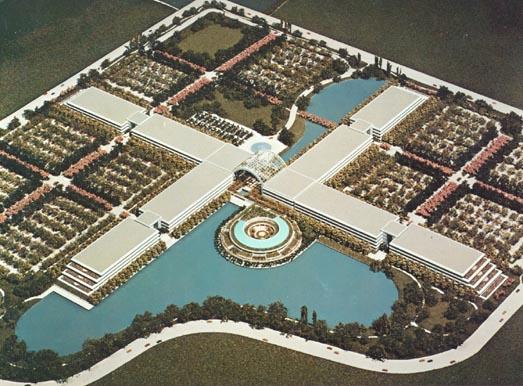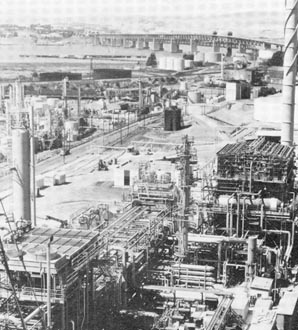Written By Ken Kinder
Well here we go again. This is the 24th of January, and the storms are coming in again. A lot of the people in the Sacramento area have just returned to their flood ravaged homes to begin repairing the damage done by the last flood a couple of weeks ago. In the midst of the repairs, the rivers are once again threatening to over flow their banks. Most of the breaks in the levees that were caused by the last storms, have not been repaired, and the water level has not receded in many locations. As the water levels rise in the many rivers that transport the run-off from the mountains to the ocean, the levels in the already flooded locations will rise.
We have still not experienced any ill effects from this bad weather, and we consider ourselves very lucky. Most of the dams all over northern California, are pretty full at this time. The reason the Reclamation Dept. has not released more water from the dams, is to keep the levels of the rivers as low as possible, in order to facilitate the necessary repairs to the breaks in the levees. Folsom dam that is located very close to our house (about 15 miles) is an exception to this rule, as it was built primarily for flood control. This means they release most of the water from the dam, so it will have the capacity to capture most of the run-off from the rivers that feed into itís catch basin, and after the storms subside they then release most of the water so they will be ready for the next storm. This water is released into the American River, that dumps into the Sacramento River, that eventually dumps into the Pacific Ocean. Most of the flood damage done in and around the Sacramento area, is the direct result of large creeks and small rivers, that have become swollen due to the extremely heavy amounts of rain that fall in a short period of time. This in turn causes them to over-flow their banks and turn all the low-lands into large lakes. I guess we canít complain as it seems the weather pattern all across the nation has not been very kind.
Along with these storms we are having some very strong winds. This reminds me of some of the weather we encountered while I was working at two refineries in the San Francisco bay area. In 1982 I was working at the Shell Oil Co. refinery on a project called a flexicoker. This was a very tall structure, and the purpose for building was to provide the means to turn otherwise low value products into usable gas and oil. It was surrounded by large I beams and steel open weave floors. This particular project was the tallest at the refinery, with elevator and crane equipment on the top elevation. From the ground to the top of the flexicoker we had to install conduit and wiring to all the lights, instruments, controls, and motors e.t.c. We worked as teams, two men to a team. When we had to work on the I beams or exterior of the project we were required to tie off with safety belts to prevent our falling to the ground. One man would crawl out on the beams and take measurements, and the other man then bent the conduit to these measurements and then gave them to his partner to install on the exterior of the structure. This refinery was located next to the Carquinez straits, a body of water that houses a large part of the ghost fleet of the U.S. Navy. A consequence of this location is that the wind blows constantly, and working on this structure at the high elevations, you feel what engineers call moments of sway. This is a motion designed into the project to prevent twisting and bending, or possible cracking from being to rigid. You become so acclimated to this motion, that you become oblivious to a lot of the things that people on the ground experience. I remember on more than one occasion, working out on the beams during some minor earthquakes, and not feeling the tremors due to the normal motion of the structure.
Another strange feeling is to work at these elevations year around, dressed in warm clothing to protect yourself from the biting cold, and then look down on the ground and see your fellow workmen dressed in tee shirts and light clothing. At the end of each day, when we dressed down and traveled down to ground level, there was quite a change in temperature. One of the advantages of being at that elevation was the view that you experienced. The Benicia bridge that spanned the Carquinez straits was very close, and the view of this and the entrance into the bay was fabulous. On many occasions we would witness large ocean going ships, barges, and tankers pass close by our direction.
I worked about a year at Shell, and then went to work at Standard Oil Co. for the Bechtel Corp. They were contracted to build a lube oil plant, and this project lasted about two years. What a drastic change in duties. I went from working at high elevations, to the off-site wire pulling crew. This job incorporated the use of large pulling equipment, the knowledge of rigging this equipment, and working underground in pull boxes to make sure that the wire that was being pulled, made the necessary transitions as they passed through these intersections. We had to use portable radios to keep in touch with the men on the pulling machinery, in order to stop the pull if there was any problem that might cause damage to either personnel or material. The problem that arose from this situation, was the fact that many of the charter fishing boats, on the bay and in the ocean, transmitted on the same frequency that we were using. It was great being in the middle of a long pull (some of the large cables we pulled from the power houses to the job sites traveled more than a mile) and have a fishing boat cut into our transmissions with some of their fish sightings. The remedy for this problem was fairly expensive, requiring a special chip being installed to isolate a band of our own.
I worked at Standard Oil for almost a year and a half, and then went to San Ramon to the telephone headquarters building. This was a great job; but it required me to travel 235 miles a day, and I was working 10 hour days, 7 days a week. By the time I got home I was so tired, and tense that while I was eating Janey massaged my neck muscles to relax me a little, and after dinner and a shower, it was bed time. It seemed like I no more than went to sleep, and it was time to hit the road again. I was 55 at this time in my life, and these long hours were really wearing me down. I decided to find living quarters close to the job so I could spend some of the nights in the bay area. I did find a nice room with two meals a day thrown in, and almost immediately after this the over-time came to a halt. I kept the room and met some nice people in the bargain. It was not long before I started getting some overtime once more. The high wage scale in the bay area, along with the overtime and high elevation and hazardous pay, made it possible for me to take off a few months between jobs. This was an office complex that was like no other I had ever encountered. It incorporated two million square feet of office space, not including the ware-housing and storage space. I was told that the cafeteria-restaurant combination was the second largest in the United States. The largest being the one located in the Pentagon. This restaurant was almost an island, not quite surrounded by itís own lake.
This lake was used as a means of cooling the interior of the offices and other structures. They would draw water from the lake into the chillers and then cool it more before blowing air across the cold surface to cool the working areas. When the surface of the lake became very warm, sprinklers would surface from the bottom of the lake, and spray the top with cool water to reduce the temperature entering the chiller units. This building was designed in the shape of an + . Having a wing for the four directions. North, South, East, and West. Each wing had four stories, and a pinch section that was like an expansion joint to act as a shock absorber in case of earthquake, or ground expansion. As one wing was completed the telephone company would move in and start using the newly completed office space. On these occasions the phone company would cater a large dinner party for the workers in appreciation of their new found space. I was there for all four of these parties, and they were first class. After this job I went on to work on the Vacaville and Folsom state prison jobs. Iíll write about them at a later date, and they were a different experience than all the rest.


Above, left is a view of the telephone headquarters building in San Ramon. Two million square feet of office space. The round structure located in the lake is the restuarant/cafeteria combination. Above, right is a view that I saw daily from the top of the flexicoker. The tallest structure at the Shell refinery. At the upper right corner is the Benicia bridge, where the large sea going vessels were viewed. The naval ghost fleet was located to the right of the bridge.